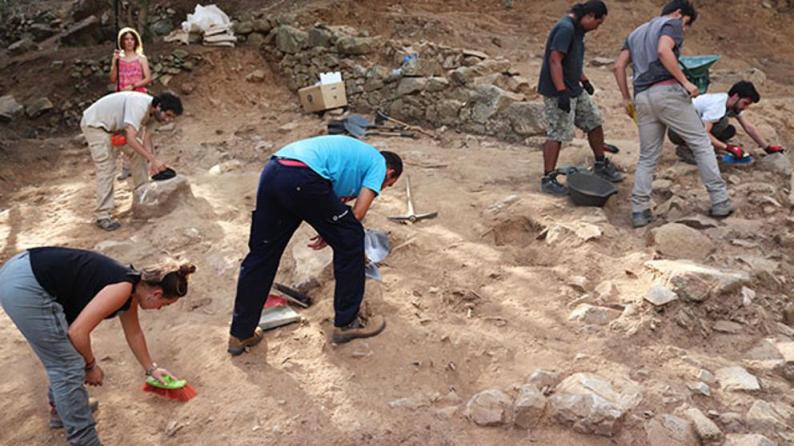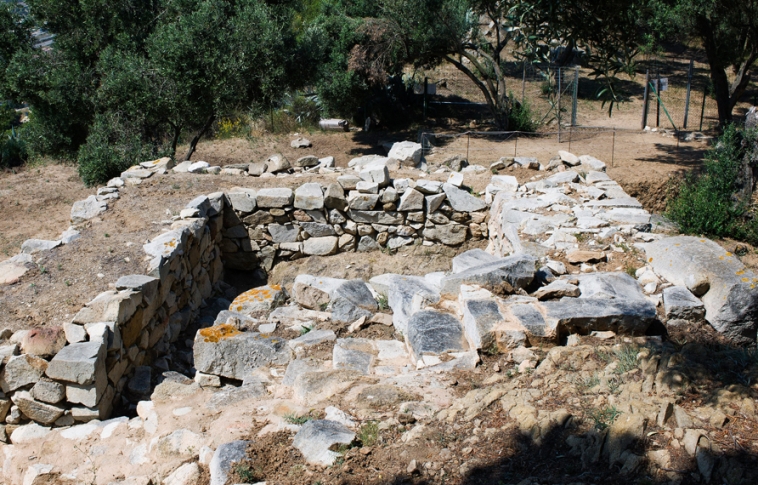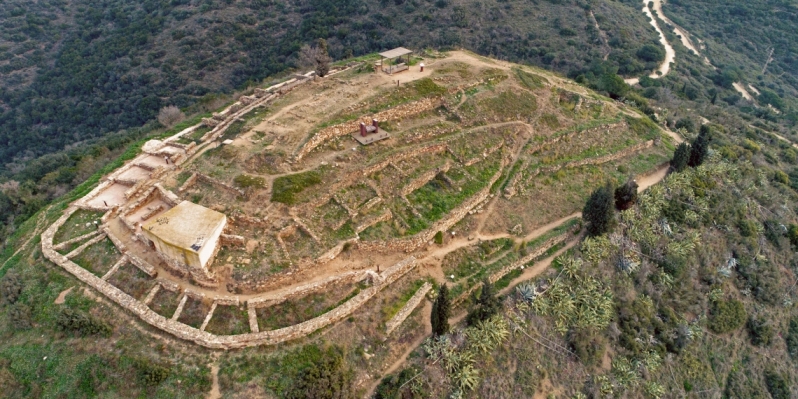2,000 years ago the area that we nowadays is known as Maresme was called Laie and its inhabitants are Layetans (its territory also extended by what is now Barcelonés, the pre-coastal depression of Vallès and Baix Llobregat).
In Layetania there were large settlements such as Burriac, in Cabrera de Mar, and many fortified towns – often high in the hills of the coastal sierras -, and farms in the lowlands. Throughout the Maresme we can find archaeological sites that explain where and how these Iberian peoples lived.
Preparing routes with the children to visit these sites when the confinement ends is a good idea to spend these days.
The main populations inhabited by the Layetans were Ailuton or Lauro (the current Mataró), Baetulo (the current Badalona) on the banks of the Vaetulo river (today Besós), or Blanda (Blanes).
In the Maresme and surroundings there are three large and outstanding sites:

Burriac fortified town (Cabrera de Mar)
Presided by the Castell de Burriac is the largest Iberian town in Layetania. It was discovered in 1915 and, since then, it has been subjected to a good number of interventions over the years. Most of the town remains unknown, and only a few places such as the west tower or the southern gate allow us to get an idea of what it meant.
It is calculated that it has a total extension of between 7 and 10 hectares and that it was inhabited for 400 years. Although there were reports of discoveries of objects in the area, the town was discovered by Lluís Bonet i Garí, who, together with his brother Pere, fixed themselves on dry stone walls at the foot of the castle other than those of the vineyards. . They showed some photographs to the architect and archaeologist Josep Puig i Cadafalch who, after a visit to the area, ratified the discovery.

Iberian town Turó d’en Boscà (Badalona)
Located on top of a hill, from the Iberian town Turó d’en Boscà the plain that currently occupies the city of Badalona and much of Barcelona was controlled. This town was built around the 4th century BC and was inhabited until the 1st BC, when the Romans founded the city of Baetulo.
The Turó d’en Boscà has important defensive bastions such as the two towers, one semi-circular and the other square, as well as the wall. In the various excavations carried out among the remains of the houses, everyday objects from that time have appeared. One of the most outstanding is the “Vas de les Naus”, a vase decorated with two Greek ships and which is the oldest maritime scene found in Catalonia.
You can visit the wall and the defense tower, the staggered streets to save the unevenness of the terrain, and some houses, among which stands out one carved out of the rock.

Ibero Puig Castellar settlement (Santa Coloma de Gramenet)
We find the Ibero Puig Castellar Village in the Serralada de la Marina, in the upper part of Turó del Pollo (303 meters of altitude). Its magnificent defensive conditions and control of the territory, as well as its spaciousness (just over 4,000 square meters) suggest that it was a very important town. It was occupied between the 6th century BC and the 2nd BC.
In its surroundings there were other settlements that are supposed to be linked, among which the rural settlement of Can Calvet and the Sitges on Calle Extremadura stand out, where surplus cereals that were used to trade with Greeks, Carthaginians and / or Romans were surely stored. .
This town was discovered by Mossèn Palà in 1902. In 1997, the Torre Baldovina Museum began its museumization. The recovery of the environment and accesses, the consolidation of the structures to guarantee their conservation and the didactic adaptation of the site stand out. This deposit is normally open every day.
¿Are you looking for a luxury house in Barcelona area?
At BestMaresme we have a great offer in the most exclusive areas of the Maresme. We are experts in luxury properties in towns such as Cabrils, Premia de Dalt, Vilassar de Dalt or Llavaneres. Are you looking for a luxury house to buy or rent in the Costa de Barcelona? Visit us or contact us.
